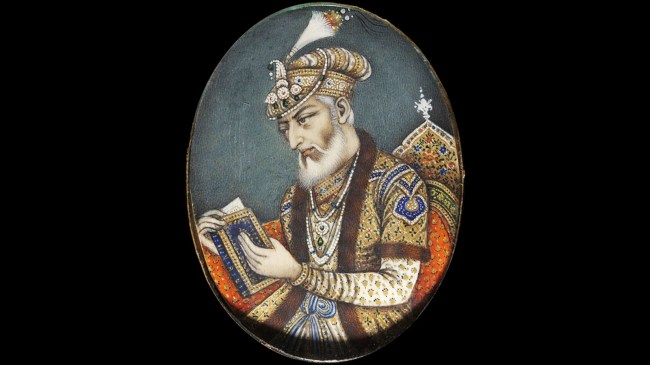Opinion Mughals in NCERT Class VIII textbook: An inaccurate retelling with a communal twist
Reason cited for such changes has been to foster ‘positive citizens’. Given the state of NCERT textbooks today, this can only mean students and future citizens are being discouraged to think critically, argue logically and understand impartially
 When it comes to temple destruction in Indian history, the Class VIII textbook only discusses it in the context of the Sultanate-Mughal period, even when numerous instances of temple destruction can be found in periods preceding them. (Photo: Wikimedia Commons)
When it comes to temple destruction in Indian history, the Class VIII textbook only discusses it in the context of the Sultanate-Mughal period, even when numerous instances of temple destruction can be found in periods preceding them. (Photo: Wikimedia Commons) The newly released NCERT history textbook for Class VIII, that covers the history of the Delhi sultans and the Mughals, is based more on gross factual errors and communal prejudices than on sound academic research. Take, for instance, the jizya, the protection tax paid by non-Muslims under some rulers of medieval India. It is described as a tool for “public humiliation” and a financial incentive for the non-Muslim population to convert to Islam.
This interpretation is, however, not found in any primary source of medieval Indian history. Levied by Caliph Umar as early as 634 AD in the newly conquered regions of the Levant, Iraq and Iran, the tax was paid by non-Muslims to be exempt from military service and be recognized as zimmis/dhimmis of the Islamic state entrusted with the responsibility (zimma) to protect the non-Muslim population. Nowhere in any Islamic literature produced in India or beyond is the tax associated with conversion of any form.
Mughal emperor Akbar, who banned the tax during his reign, is regarded by the new NCERT textbook as having done so in his later years after consolidating his kingdom. Having lost his father, emperor Humayun, in 1556 AD, young Akbar was kept under the regency of his guardian Bairam Khan and assumed the throne only in 1560 AD. He abolished the jizya a few years later (1563-64 AD), regarding it as a discriminatory tax.
Apart from such glaring factual inaccuracies, the textbook also re-introduces discarded labels such as “dark periods of history” for the Sultanate-Mughal period. “Dark Age” was first used for the Early Middle Age in Europe that was inaccurately regarded as a period of only ignorance and barbarity. Judged from a contemporary lens, terms such as “dark period” oversimplify and decontextualise a period of history and are no longer used in academic parlance.
Further, labels such as “cruel” and “brutal” have been casually used to describe Mughal rulers such as Akbar, whose reign, the book says, was a “blend of brutality and tolerance”. Akbar’s siege of Chittor in 1567 AD where 30,000 civilians were killed earned him the “brutal” epithet from the NCERT. However, instances of war brutality are a feature of most royal reigns. For instance, the famous Chola ruler Rajendra Chola’s 1042 AD inscription recording his victory over the Chalukyas details how the entire town of Kollipakkai was burnt to ashes and many Jain temples destroyed. Similarly, his Karandai Prashasti extols another victory over the Chalukyas and records how the capital of the Chalukya kingdom, Manyakheta, was burnt down and many women and children perished in the great fire. Yet, none of these instances are mentioned in the NCERT’s Class VII history textbook, in which this period of history is covered. Multiple instances of killing of the civilian population during wars have also not earned Rajendra Chola the epithet of “brutal” or “cruel”.
When it comes to temple destruction in Indian history, the Class VIII textbook only discusses it in the context of the Sultanate-Mughal period, even when numerous instances of temple destruction can be found in periods preceding them. The wanton destruction of all except two temples in Kashmir by 11th century ruler Harsha, recorded in the Sanskrit history of Kashmir, Kalhana’s Rajatarangini, or the destruction of multiple Jain shrines by followers of Virashaivism in 12th-13th century Karnataka, or the burning and looting of multiple Buddhist viharas by rulers such as Kshemagupta, Mihirakula and Pushyamitra Shunga are nowhere to be found in the NCERT’s textbooks. If the aim is to truly correct past omissions, then these should also find mention. Otherwise, it gives an incomplete and deliberately communal twist to temple destruction when it was a practice followed by many rulers of India, and not just by the Islamic rulers of the Sultanate or the Mughal dynasty.
Factual inaccuracies, blatant communalism, incomplete histories and oversimplification are not merely a feature of the new Class VIII history textbook. They can also be found in other subject textbooks that have recently been revised by the NCERT. These include Class XI and Class XII political science textbooks, in which references to Babri Masjid demolition, the 1992 Bombay riots as well as the Gujarat riots 2002 have been erased. The reason cited for such changes has been to foster “positive citizens”. Given the state of NCERT textbooks today, it can only mean students and future citizens are being discouraged to think critically, argue logically and understand impartially.
The writer is a Delhi-based historian and professor. She runs a Youtube channel on Indian history called Eyeshadow and Etihaas




